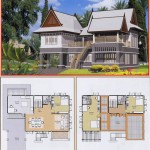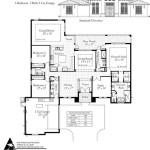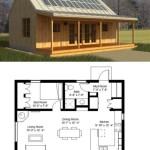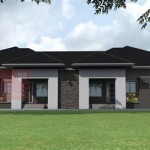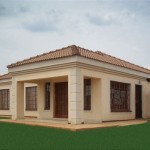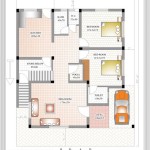Greenhouse Plans: A Comprehensive Guide to Designing Your Ideal Growing Space
Planning a greenhouse involves careful consideration of various factors, from budget and available space to the specific plants intended for cultivation. A well-designed greenhouse plan optimizes growing conditions and ensures efficient use of resources.
The initial step in developing greenhouse plans is determining the intended use. Will the greenhouse be used for starting seedlings, overwintering plants, or year-round growing? The intended use dictates the necessary features, such as heating, ventilation, and lighting systems. Growing specific crops like orchids or cacti may also necessitate specialized environmental controls.
Location plays a crucial role in greenhouse effectiveness. Ideally, a greenhouse should receive maximum sunlight exposure, particularly during the winter months. Orienting the greenhouse on an east-west axis generally provides optimal sun exposure. Additionally, consider proximity to utilities like water and electricity, as well as protection from prevailing winds and potential hazards like falling trees.
Size is another critical consideration in greenhouse plans. Available space often dictates the maximum dimensions. However, the type and quantity of plants intended for cultivation should also inform size decisions. Overcrowding can lead to disease and reduced yields, while an excessively large greenhouse can increase heating and maintenance costs unnecessarily.
Material selection significantly impacts greenhouse performance and cost. Common framing materials include wood, aluminum, and PVC. Wood offers aesthetic appeal but requires regular maintenance. Aluminum is durable and low maintenance, while PVC is a cost-effective option suitable for smaller structures. Glazing materials range from polyethylene film, a budget-friendly choice, to polycarbonate panels or glass, which offer better insulation and longevity.
Ventilation is essential for regulating temperature and humidity within the greenhouse. Proper ventilation prevents overheating and reduces the risk of fungal diseases. Ventilation systems can range from simple manual vents to sophisticated automated systems with fans and thermostats. The size and type of greenhouse will influence the necessary ventilation capacity.
Heating systems maintain optimal temperatures for plant growth, especially during colder months. Heating options include electric heaters, gas heaters, and wood-burning stoves. The climate, greenhouse size, and desired temperature range will determine the most suitable heating system. Consider the operating costs and environmental impact of each option when making a selection.
Lighting plays a vital role in plant growth, particularly in regions with limited sunlight during winter. Supplemental lighting can extend the growing season and improve plant health. High-intensity discharge (HID) lights and light-emitting diode (LED) grow lights are common choices for greenhouse lighting. Factors such as plant species and desired growth rates should guide lighting selection.
Irrigation systems provide consistent and efficient watering for greenhouse plants. Drip irrigation systems deliver water directly to the plant roots, minimizing water waste and reducing the risk of fungal diseases. Soaker hoses and overhead sprinkler systems are alternative irrigation methods, each with its own advantages and disadvantages.
Benches and shelving maximize space utilization within the greenhouse and improve accessibility to plants. Choosing appropriate materials for benches and shelving is important. Consider durability, ease of cleaning, and resistance to moisture and pests. The height and spacing of benches should accommodate the specific plants being grown.
Pest and disease control are crucial aspects of greenhouse management. A well-ventilated greenhouse with proper sanitation practices can minimize pest and disease problems. Implementing preventative measures, such as introducing beneficial insects and using organic pesticides, can further reduce the need for chemical interventions.
Greenhouse plans should also incorporate considerations for accessibility and workflow. Paths and walkways should allow for easy movement within the greenhouse. The layout should facilitate efficient tasks like watering, fertilizing, and harvesting. Consider incorporating a potting area and storage space for tools and supplies.
Budgeting is a crucial element of greenhouse planning. Develop a realistic budget that encompasses all aspects of the project, including materials, labor, permits, and ongoing operating costs. Prioritize essential features and consider phasing the project if necessary to manage costs effectively.
Consulting with local experts, such as horticulturalists or experienced greenhouse growers, can provide valuable insights and guidance throughout the planning process. Local regulations and building codes may also dictate specific requirements for greenhouse construction and operation.
Developing comprehensive greenhouse plans requires careful consideration of numerous factors. By addressing these factors systematically, individuals can create a functional and productive growing space tailored to their specific needs and objectives. Thorough planning ensures efficient resource utilization and optimizes the potential for successful plant cultivation.

8 X 12 Greenhouse Plans Version

Best Diy Greenhouse Blueprints Kits And Plans

9 X 16 Greenhouse Plans Polycarbonate Covered Cedar Wood

Small Gable Roof Greenhouse Plans Spruc D Market

Diy Greenhouse Plans With Raised Garden Beds

6 X 12 Greenhouse Plans Version Backyard Garden Design Diy

Greenhouse Build Plans Wilker Do S

Greenhouse Plans Easy 8 X 9 Framed Gabled Build

Defina Greenhouse E Plan Mother Earth News

Greenhouse Plans 8 X8 Step By Construct101

